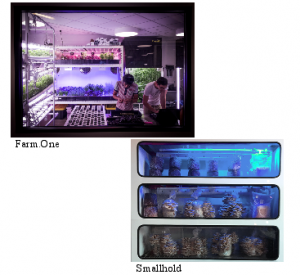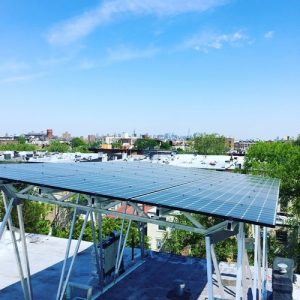Tag: energy
August 8, 2021
Monthly Forum: Dirty Energy Around the World

With the international emphasis on electrification, we must focus on the amount of electricity that is being generated by renewables rather than carbon based fuels. In all but one state in the US (and in much of the EU), there are not as many renewables as hoped in the energy mix. (Watch the recording of this forum on our Youtube channel!)
(more…)August 3, 2020
Community Solar Generates Economic and Social Power
By Ansh Sandhu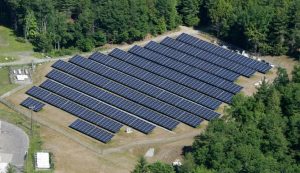 Conventional power plants produce energy by burning fossil fuel to run turbines that produce electricity, which is then distributed via an extensive transmission system into our homes and businesses. Such systems are expensive to lay out, so utilities worldwide prefer to set these up in urban areas where the population density is higher.
For cities already struggling to reduce emissions from buildings and transportation, conventional power systems have exacerbated the problem. In more remote areas, the fossil fuel model has led to a power disparity, particularly in disadvantaged communities (DACs).
(more…)
Conventional power plants produce energy by burning fossil fuel to run turbines that produce electricity, which is then distributed via an extensive transmission system into our homes and businesses. Such systems are expensive to lay out, so utilities worldwide prefer to set these up in urban areas where the population density is higher.
For cities already struggling to reduce emissions from buildings and transportation, conventional power systems have exacerbated the problem. In more remote areas, the fossil fuel model has led to a power disparity, particularly in disadvantaged communities (DACs).
(more…)
June 18, 2019
Monthly Forum: Water Energy Nexus

Most people wonder how much energy it takes to heat up water. However, people rarely consider how much water it takes to produce energy or to produce our food and other manufactured goods. These are questions this forum will attempt to answer in order to help participants understand their true water and energy usage. Join us!
Date: Wednesday, June 19, 2019 Time: 6:30 PM – 8:00 PM Place: TOTO Showroom, 20 West 22nd Street, 1st floor, New York, NY 10010
REGISTER HERE! (more…)December 11, 2018
October Forum Recap: Passive House High Rise
By Jessica Bartolini; Photos by Olha Peralta
High-rise Passive House buildings were the subject of GreenHomeNYC’s monthly forum in October. The three presentations provided attendees with an overview of what implementing Passive House standards looks like in real life.
Gahl Sorkin Spanier of the Association for Energy Affordability (AEA) kicked off the evening with a presentation on how best to go about building a high-rise Passive House (PH) project. Kevin Brennan, formerly of AEA and now co-owner of Brennan Brennan Insulation and Air tightness, joined Gahl in sharing learnings from Passive House projects and training. AEA recently worked on an 86-unit PH affordable residence for seniors in Queens, in partnership with the non-profit organization HANAC.
 Kevin Brennan & Gahl Spanier
Kevin Brennan & Gahl SpanierGahl emphasized the importance of holding training for the various trades building a PH project, noting that the main sources of air leakage are often at details where trade responsibilities are unclear. It is key, therefore, that training not only instill understanding of PH requirements, but also recognition of the importance of collaboration and coordinating across trades. Another takeaway from AEA’s experience is that training should not include more theory or math than necessary. Gahl noted that any general contractor personnel in a supervisory role should not only receive training, but also be empowered to teach others.
May 29, 2018
March Forum Recap: Sustainable Policy 201
by Miaoru Guan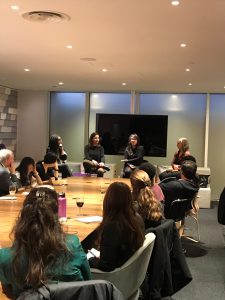 The Sustainable Policy 201 Forum featured four speakers working towards sustainable, affordable housing through diverse but connected roles. Michelle Andry works at New York State Energy Research and Development Authority (NYSERDA), where she focuses on energy efficiency, clean energy, and energy affordability initiatives impacting low-income housing. Francesca Camillo, Project Manager at NYC Department of Housing Preservation and Development (HPD), assists building owners in procuring funding for rehabilitation. Elizabeth Kelly, Manager of Sustainability Programs at The Community Preservation Corporation (CPC), leverages private capital to support sustainable multi-family housing and community revitalization projects. Andrea Mancino is Director of New Construction at Bright Power, and manages team members working on ground-up new construction and commissioning projects.
The panelists discussed how effective policy can encourage wider adoption of sustainable practices in housing by facilitating financing from government sources. For example, to qualify for government funding, new construction and rehabilitation buildings must receive building certification, such as Enterprise Green Communities or LEED certification. Mancino mentioned that achieving certification as an Enterprise Green Community requires buildings to outperform standard building code by 15%. Kelly discussed how these standards help the CPC and private lenders ensure projects have fulfilled a sustainability checklist, reducing the time projects spend in due diligence. Andry added that certified buildings are eligible for NYSERDA grants as well as HPD funding.
(more…)
The Sustainable Policy 201 Forum featured four speakers working towards sustainable, affordable housing through diverse but connected roles. Michelle Andry works at New York State Energy Research and Development Authority (NYSERDA), where she focuses on energy efficiency, clean energy, and energy affordability initiatives impacting low-income housing. Francesca Camillo, Project Manager at NYC Department of Housing Preservation and Development (HPD), assists building owners in procuring funding for rehabilitation. Elizabeth Kelly, Manager of Sustainability Programs at The Community Preservation Corporation (CPC), leverages private capital to support sustainable multi-family housing and community revitalization projects. Andrea Mancino is Director of New Construction at Bright Power, and manages team members working on ground-up new construction and commissioning projects.
The panelists discussed how effective policy can encourage wider adoption of sustainable practices in housing by facilitating financing from government sources. For example, to qualify for government funding, new construction and rehabilitation buildings must receive building certification, such as Enterprise Green Communities or LEED certification. Mancino mentioned that achieving certification as an Enterprise Green Community requires buildings to outperform standard building code by 15%. Kelly discussed how these standards help the CPC and private lenders ensure projects have fulfilled a sustainability checklist, reducing the time projects spend in due diligence. Andry added that certified buildings are eligible for NYSERDA grants as well as HPD funding.
(more…)
March 18, 2018
February Forum Recap: How to be Cool and Efficient
by Yiran Song Air conditioning is increasingly considered to be a required amenity in both residential and commercial settings. But concerns about global warming and greenhouse gas emissions gives us no time to waste in achieving more energy efficient AC systems. In the February GreenHomeNYC Forum “How to be Cool and Efficient”, three industry experts provided a detailed description of the mechanics of AC systems and the industry as a whole.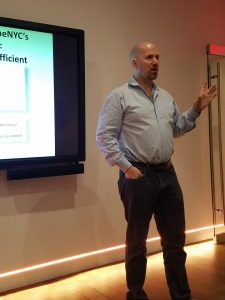 Systems and Relative Energy Efficiency
Brendan Casey, of Fujitsu General America, believes that the Variable Refrigerant Volume (VRV) or so-called Variable Refrigerant Flow (VRF) system is the future of AC systems. Even though VRF can be carried as cooling only, building owners and management companies in places like New York City should consider either heat pump or heat recovery systems which provide both cooling and heating. The heat recovery system carries higher installation cost, but it can provide both heating and cooling at the same time to different zones based on demand with only one control.
(more…)
Systems and Relative Energy Efficiency
Brendan Casey, of Fujitsu General America, believes that the Variable Refrigerant Volume (VRV) or so-called Variable Refrigerant Flow (VRF) system is the future of AC systems. Even though VRF can be carried as cooling only, building owners and management companies in places like New York City should consider either heat pump or heat recovery systems which provide both cooling and heating. The heat recovery system carries higher installation cost, but it can provide both heating and cooling at the same time to different zones based on demand with only one control.
(more…)
March 1, 2018
January Forum Recap: The Green Catwalk
by Jenny Nicolas At the annual GreenHomeNYC Green Catwalk, seven speakers presented the latest information on everything from ventilation to greening the moving industry to O&M to-do lists within the sustainability space. Part 1: Eat, Breathe, Move, & Check Sustainably Changing Our Relationship with Food Ricky Stephens, co-founder of AgTech X, set the stage by presenting some of the biggest flaws within our country’s current food system. He indicated that 80% of the food grown today is not meant for human consumption, with 40% grown to support animals and 40% to be processed into biofuels. Additionally, though the plant kingdom is diverse, 84% of total US cropland is dedicated to just three crops: corn, soybean, and wheat. The long term prospects for the system are also in jeopardy as farming is not attracting new folks to the industry – the average age of a U.S. farmer is 58. What can be done to fix our current system? The goal of AgTech X is to create a new food economy, using urban farming as a vehicle to educate, decentralize, and make farming exciting again. AgTech X fosters a collective community by hosting classes, workshops and tours. Its co-lab workspace supports decentralized urban farming methods like Farm One and Smallhold, indoor farms housed in restaurants that produce farm-to-table microgreens. And a recent “Intro to Aquaponics” class by Oko Farms explained the closed-loop system of raising fish, creating fertilizer for plant growth and filtering the water. While urban farming is not a new concept, innovations in the past five years are making it a more intriguing career option for young professionals! (more…)November 28, 2017
September Forum Recap: Spotlight on Hudson Yards
by Jennifer Urrutia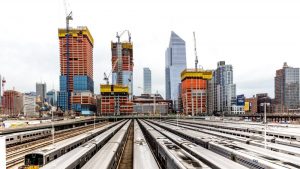
Photo source: ny.curbed.com
November 27, 2017
October Forum Recap: Women of Green
by Claire Brown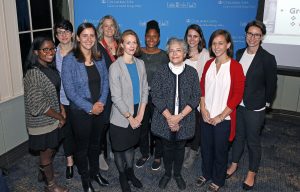 During GreenHomeNYC’s October Forum, eight women of green led us on a tour of their green building career paths. Through the Pecha Kucha style of presentation, the speakers used timed-slides to guide us through their search for their dream careers in engineering, sustainable design, new construction, and more. In addition to sharing their stories, the speakers offered advice to those seeking green careers. The forum was co-hosted by GreenHomeNYC and the Center on Global Energy Policy’s Women in Energy program at Columbia University.
During GreenHomeNYC’s October Forum, eight women of green led us on a tour of their green building career paths. Through the Pecha Kucha style of presentation, the speakers used timed-slides to guide us through their search for their dream careers in engineering, sustainable design, new construction, and more. In addition to sharing their stories, the speakers offered advice to those seeking green careers. The forum was co-hosted by GreenHomeNYC and the Center on Global Energy Policy’s Women in Energy program at Columbia University.
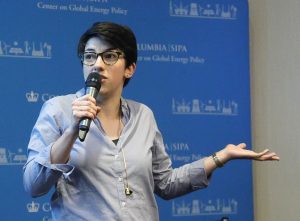 Lucie Dupas, Entersolar
Dupas had engineering built into her genetic blueprint, with both of her parents working as IT engineers. She finished her formal education in engineering by completing a Master’s program in France, and was proud that the program was comprised of roughly 42% women. Surrounded by so many women in her field, she felt that being a female engineer was “the normal thing to do.” In search of her dream internship, Dupas moved to New York City and joined a renewable energy consulting startup at the NYU Poly Acre Incubator where she built her first photovoltaic system. The internship ultimately led to a full-time job at Sollega, a solar equipment manufacturer where she did “all the things that you think an engineer does”. According to Dupas, “I did a 3-D design of a racking part and tested it in a laboratory and I trained some 200 pound electricians.” Next she worked at Bright Power, where she helped bring solar power to affordable housing and managed the installation of several solar thermal and photovoltaic systems. She is now the Engineering Director at the nationwide solar installer Entersolar where she works on commercial projects with a specific focus on solar PV technology. Lucie is an avid proponent of training programs. “You know how you think you know something, but then you go through a certification program and you realize there’s so much that you don’t really know. And having the certification on your resume is so useful to show yourself as an expert in the industry.”
(more…)
Lucie Dupas, Entersolar
Dupas had engineering built into her genetic blueprint, with both of her parents working as IT engineers. She finished her formal education in engineering by completing a Master’s program in France, and was proud that the program was comprised of roughly 42% women. Surrounded by so many women in her field, she felt that being a female engineer was “the normal thing to do.” In search of her dream internship, Dupas moved to New York City and joined a renewable energy consulting startup at the NYU Poly Acre Incubator where she built her first photovoltaic system. The internship ultimately led to a full-time job at Sollega, a solar equipment manufacturer where she did “all the things that you think an engineer does”. According to Dupas, “I did a 3-D design of a racking part and tested it in a laboratory and I trained some 200 pound electricians.” Next she worked at Bright Power, where she helped bring solar power to affordable housing and managed the installation of several solar thermal and photovoltaic systems. She is now the Engineering Director at the nationwide solar installer Entersolar where she works on commercial projects with a specific focus on solar PV technology. Lucie is an avid proponent of training programs. “You know how you think you know something, but then you go through a certification program and you realize there’s so much that you don’t really know. And having the certification on your resume is so useful to show yourself as an expert in the industry.”
(more…)

